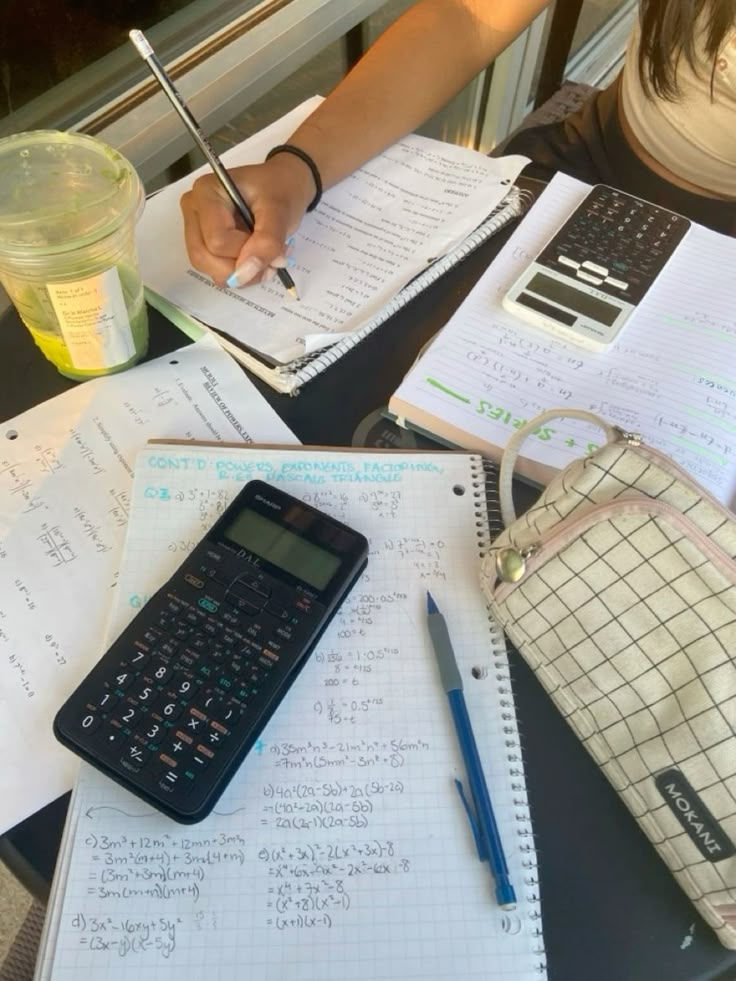Tips for Setting Good Study Habits (That Actually Stick)
- Bianca Ilankovan

- Aug 27
- 3 min read
Studying isn’t just about opening a textbook and hoping something sticks. Good study habits are like little superpowers. They help you learn more efficiently, remember what you need, and actually enjoy the process. If you’ve ever felt frustrated, overwhelmed, or like no matter how hard you try, you just can’t focus, this post is for you. Here’s how to set study habits that actually work.
1. Make a Schedule You Can Stick To
The first step to better study habits is consistency. That doesn’t mean studying for hours every day (because let’s be real, that’s exhausting). It means finding a rhythm that fits your life.
Tips:
Dedicate certain times of the day to studying. Even 30-60 minutes consistently is better than cramming.
Pair study times with things you already do, like right after school or after a snack break.
Use a planner or calendar to map out your week. Seeing it visually makes it easier to follow.
2. Break Tasks Into Manageable Pieces
Big assignments can feel impossible if you try to tackle them all at once. That’s why breaking them into smaller tasks is a game-changer.
Tips:
Divide an essay into research, outlining, drafting, and editing stages.
For exams, focus on one chapter or topic at a time.
Celebrate completing each small piece. It keeps motivation high!
Pro tip: Pair this with the Pomodoro method. 25 minutes of focused work feels way more doable than a marathon session.
3. Find Your Perfect Study Space
Your environment has a huge effect on how well you focus. Some people need absolute silence, others thrive with a little background noise. The key is intentionality.
Tips:
Keep your study area tidy and free of distractions.
Make it inviting! Add a plant, a cozy lamp, or a favourite notebook.
Experiment with different spots until you find the one that works best for you.
4. Mix It Up
Studying doesn’t have to be boring. Mixing up methods can help you understand and remember material better.
Ideas:
Rewrite notes in your own words.
Teach the material to someone else (or even your pet!).
Use flashcards, quizzes, or apps for interactive practice.
Switching things up keeps your brain engaged and prevents burnout.
5. Keep Track of Your Progress
Nothing motivates quite like seeing how far you’ve come. Tracking your progress helps you spot what’s working and what isn’t.
Tips:
Use a journal or planner to check off completed tasks.
Reflect weekly: What did you do well? What could be improved next week?
Reward yourself for milestones. Small treats, a favourite snack, or even a fun break.
6. Take Care of Yourself
Good study habits aren’t just about memorizing books. They’re about taking care of your brain and body, too.
Self-care essentials:
Sleep: Your brain actually needs it to store information.
Nutrition: A healthy snack before studying = more focus.
Movement: Stretch, walk, or do a quick workout to recharge your energy.

Remember, a tired brain doesn’t retain information, no matter how many hours you put in.
7. Be Flexible and Kind to Yourself
Finally, remember that habits take time to form. You’re not going to be perfect from day one, and that’s okay.
Tips:
Don’t punish yourself if you skip a study session. Just pick up where you left off.
Experiment with what works for you, not just what works for someone else.
Celebrate consistency over perfection. Even showing up is progress.
Setting good study habits isn’t about grinding 24/7 or being perfect. It’s about creating a system that helps you focus, stay motivated, and enjoy learning. By scheduling your time, breaking tasks into pieces, finding your ideal study space, and taking care of yourself, you’ll start to notice your productivity and confidence grow.
Credit to Aesthetic by Taizhen on Pinterest for the image.



Comments